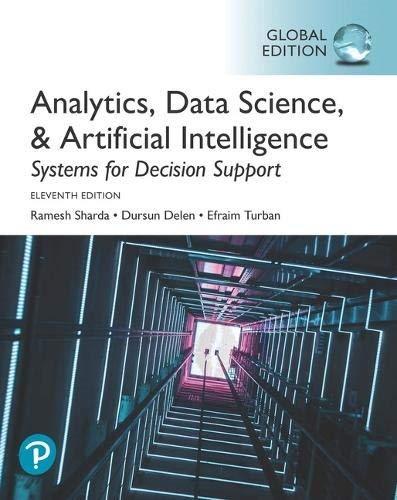A steel manufacturing plant produces rolled steel tubes for different industries across the country. They build tubes
Question:
A steel manufacturing plant produces rolled steel tubes for different industries across the country. They build tubes based on a customer's requirements and specifications. Maintaining high quality norms and timely delivery of products are two of the foremost important criteria for this steel tubing plant. The plant views its manufacturing system as a sequence of operations where it unrolls steel from one reel and rolls it onto a different reel.
This happens once the forming, welding, editing, or inspecting operation is finished. The ultimate product would be a reel of rolled steel tubing that weighs about 20 tons. The reel is then shipped to the customer.
A key challenge for management is to be able to predict the appropriate delivery date for an order, and its impact on the currently planned production schedule. Given the complexity of the production process, it is not easy to develop an optimization model in Excel or other software to build a production schedule (see Application Case 8.1). The issue is that these tools fail to capture key planning issues such as employee schedules and qualifications, material accessibility, material allocation complication, and random aspects of the operation.
Methodology/Solution
When traditional modeling methods do not capture the problem subtleties or complexities, a simulation model could perhaps be built. The predictive analysis approach uses a versatile Simio simulation model that takes into consideration all the operational complexity, manufacturing material matching algorithms, and deadline considerations.
Also, Simio's service offering, known as risk based planning and scheduling (RPS), provides some user interfaces and reports simply designed for production management. This gives the client the ability to explore the impact of a new order on their production plan and schedule within about 10 minutes.
Questions for Discussion
1. Explain the advantages of using Simio’s simulation model over traditional methods.
2. In what ways has the predictive analysis approach helped management achieve the goals of analyzing the production schedules?
3. Besides the steel manufacturing industry, in what other industries could such a modeling approach help improve quality and service?
Step by Step Answer:

Analytics Data Science And Artificial Intelligence Systems For Decision Support
ISBN: 9781292341552
11th Global Edition
Authors: Ramesh Sharda, Dursun Delen, Efraim Turban





